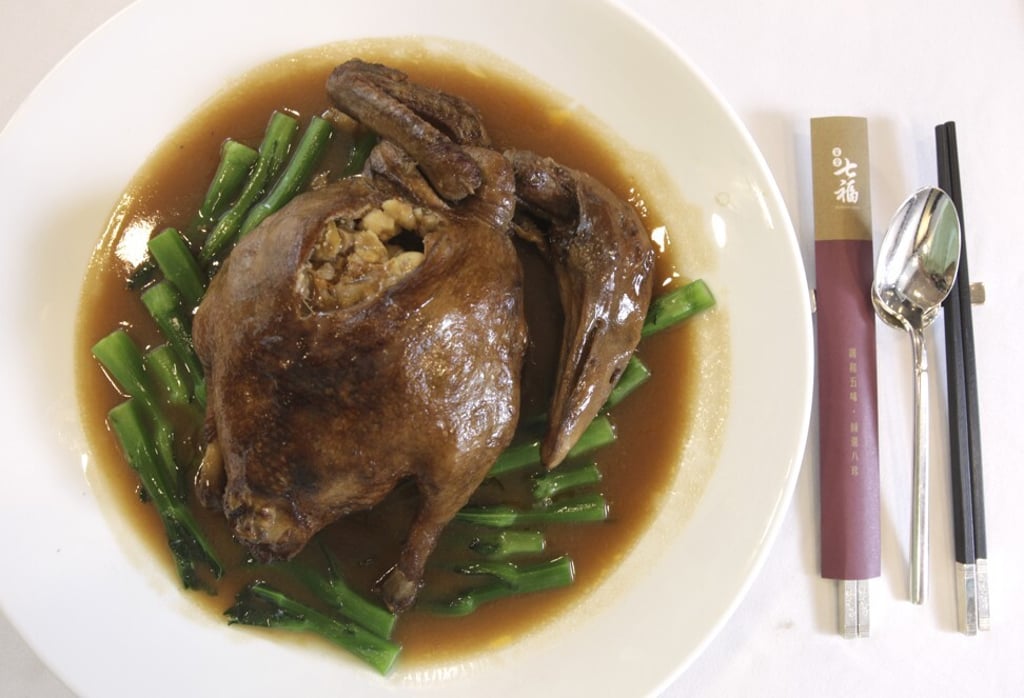Can fine-dining Cantonese cuisine survive as old chefs retire, when young ones don’t want to put in the hours?
- When Kwong Wai-keung of T’ang Court at The Langham hotel retires, his apprentice will replace him – but not all Cantonese fine-dining chefs will be so lucky
- Fewer young chefs want to put in the time to learn, and to cook, the complex dishes that elevate southern Chinese traditional cuisine

Eight treasure duck is a labour-intensive dish served in traditional Cantonese restaurants that’s ordered days in advance.
First, the duck is marinated overnight in dark soy sauce, spices and Shaoxing wine. The following day, hot oil is ladled over the duck to tighten the skin. Once the bird has cooled, it is stuffed with eight stir-fried ingredients, which can include glutinous rice, diced mushrooms and water chestnuts, lotus seeds, Chinese sausage, chestnuts, dried shrimps, bamboo shoots and dates. Then, the cavity is sealed with a metal skewer.
Finally, the duck is cooked in soy-flavoured chicken stock for more than an hour. When sliced open, the aroma of the stuffing mixes with that of the succulent, tender duck.

Veteran chefs well into their sixties are starting to retire or have already hung up their aprons, and with them goes decades of knowledge and experience of cooking traditional dishes that were once hugely popular.
Master chef Kwong Wai-keung will turn 65 this year and, although he has thought about retirement, he believes he still has the energy to carry on. When he finally does put down his cleaver for good, though, Kwong will be able to look back on a distinguished career.